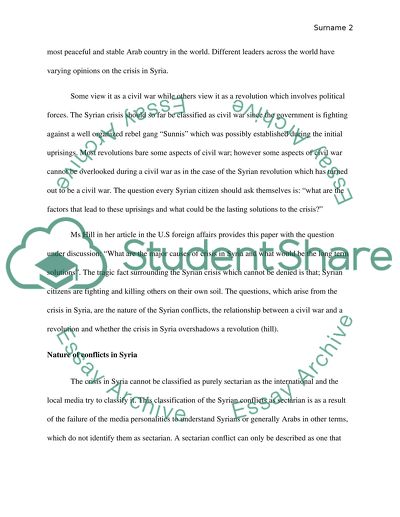Cite this document
(“Uprising of Syria Research Paper Example | Topics and Well Written Essays - 2500 words”, n.d.)
Uprising of Syria Research Paper Example | Topics and Well Written Essays - 2500 words. Retrieved from https://studentshare.org/history/1494288-uprising-of-syria
Uprising of Syria Research Paper Example | Topics and Well Written Essays - 2500 words. Retrieved from https://studentshare.org/history/1494288-uprising-of-syria
(Uprising of Syria Research Paper Example | Topics and Well Written Essays - 2500 Words)
Uprising of Syria Research Paper Example | Topics and Well Written Essays - 2500 Words. https://studentshare.org/history/1494288-uprising-of-syria.
Uprising of Syria Research Paper Example | Topics and Well Written Essays - 2500 Words. https://studentshare.org/history/1494288-uprising-of-syria.
“Uprising of Syria Research Paper Example | Topics and Well Written Essays - 2500 Words”, n.d. https://studentshare.org/history/1494288-uprising-of-syria.


